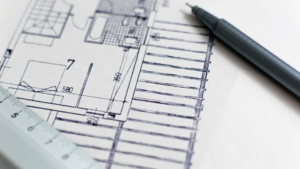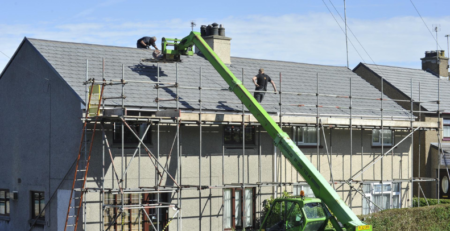The Two-Staircase Mandate: Changing the Landscape of Urban Living
In the ever-evolving landscape of urban development, safety measures in tall residential buildings have taken a pivotal turn. Urban development is constantly transforming, adapting to the needs and safety concerns of its inhabitants. In this dynamic landscape, the approach to ensuring the safety of tall residential buildings has undergone a significant shift. This change isn’t merely a passing trend but a robust response to the growing concern for safety and emergency readiness within urban spaces. The push for incorporating a two-staircase set up in every new tall residential building emerges from this context. It’s a movement that signifies a deeper understanding and commitment to the welfare of city dwellers.
This initiative, championed by government bodies and supported by a wide range of stakeholders, aims to redefine the standards of safety in residential constructions. It’s a collaborative effort to engrain safety into the fabric of urban architecture, setting a precedent for future developments.
The Call for Safety: A Second Staircase
In recent times, consultations and legislative actions have brought to light the pressing need for dual egress routes in high-rise buildings. This advocacy, coming from a broad spectrum of experts in safety and architectural design, focuses on augmenting the safety of occupants in emergency situations. The introduction of a second staircase in tall buildings is seen as a critical measure, providing an alternative escape route that could be the difference between life and death during emergencies.
This call for an additional staircase is driven by the understanding that in moments of crisis, having multiple escape options can drastically enhance the chances of safe evacuation. It’s a proactive approach to emergency preparedness, ensuring that the infrastructure in place supports the well-being of those it houses.
Why Two Staircases? Understanding the Benefits
At its core, the concept of two staircases is about amplifying safety. This seemingly straightforward strategy significantly mitigates risks during emergencies by offering an alternate escape route should one become inaccessible. Yet, the advantages of this approach extend well beyond the realm of emergency situations.
Incorporating two staircases enhances building accessibility, facilitating smoother movement and crowd management. This dual-staircase model also presents benefits in the building’s day-to-day operations, including maintenance and service activities. It embodies a holistic approach to building design, where safety and functionality go hand in hand.
The UK’s New Mandate: A Closer Look
In a significant move, the UK government, under the leadership of Housing Secretary Michael Gove, has mandated the inclusion of two staircases in all new residential buildings exceeding 18 meters in height. This decision is a testament to the government’s commitment to elevating safety standards in residential architecture. It underscores a growing recognition of the indispensable role that architectural design plays in safeguarding the lives and well-being of residents.
This mandate marks a critical step forward in the evolution of building regulations, reflecting an adaptive response to the challenges and risks associated with modern urban living. It sets a new benchmark for safety in residential construction, signaling a shift towards more resilient and thoughtfully designed urban habitats.

The Impact on Property Investors and Developers
Jamie Johnson, CEO of FJP Investment, encapsulates the essence of this regulatory shift, stating, “For property investors, this new regulation is not just about compliance; it’s about commitment to safety and quality.” This perspective highlights the broader implications of the mandate on the real estate market. It signifies a potential impact on property values, investment strategies, and the cost of development. Yet, it also opens the door to innovation in design and construction, aligning with a growing demand for buildings that are not only safe but are built to withstand the test of time and challenge.
For investors and developers, this represents an opportunity to lead with safety and quality, differentiating their properties in a competitive market. It’s a call to rethink traditional design approaches and embrace practices that prioritize the safety and satisfaction of occupants.
Conclusion
The initiative to integrate second staircases in all new tall residential buildings represents a fundamental shift in the approach to building safety and design. It signifies a collective advancement towards ensuring that the skyscrapers of the future offer more than just height—they embody safety, resilience, and innovation. As the UK spearheads this mandate, its impact is expected to ripple through the property market, influencing developers, investors, and residents alike. It marks a significant step towards creating a safer, more secure urban landscape for future generations, reinforcing the notion that in the realm of urban development, safety should always be paramount.
ARE YOU READY TO START INVESTING?
Subscribe to our mailing list now for exclusive deals, investment guides and the latest information from the property market.







